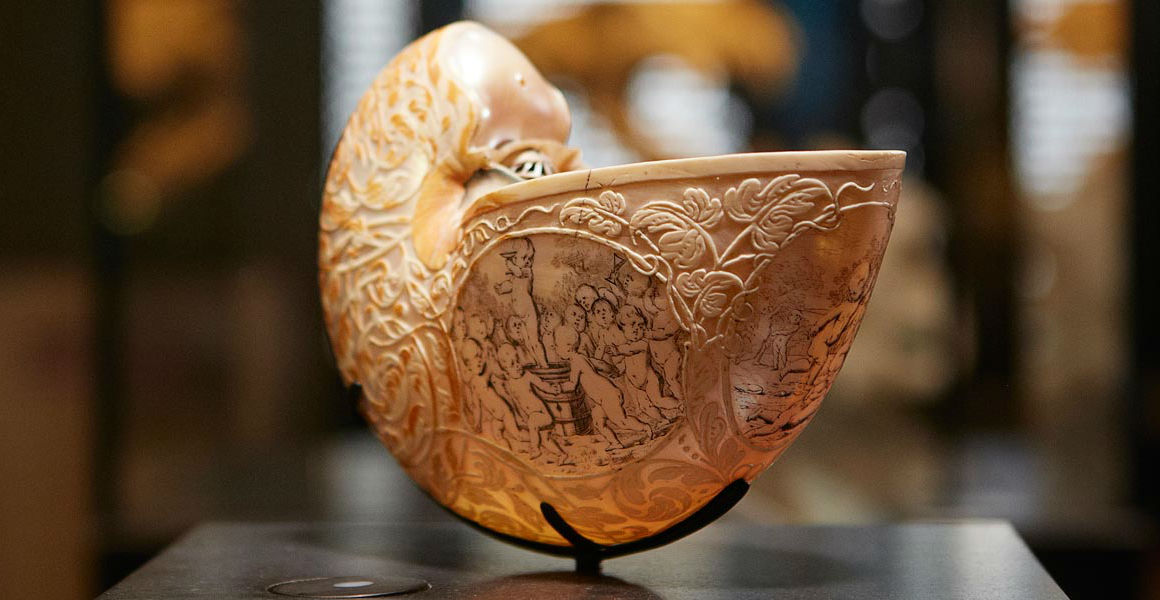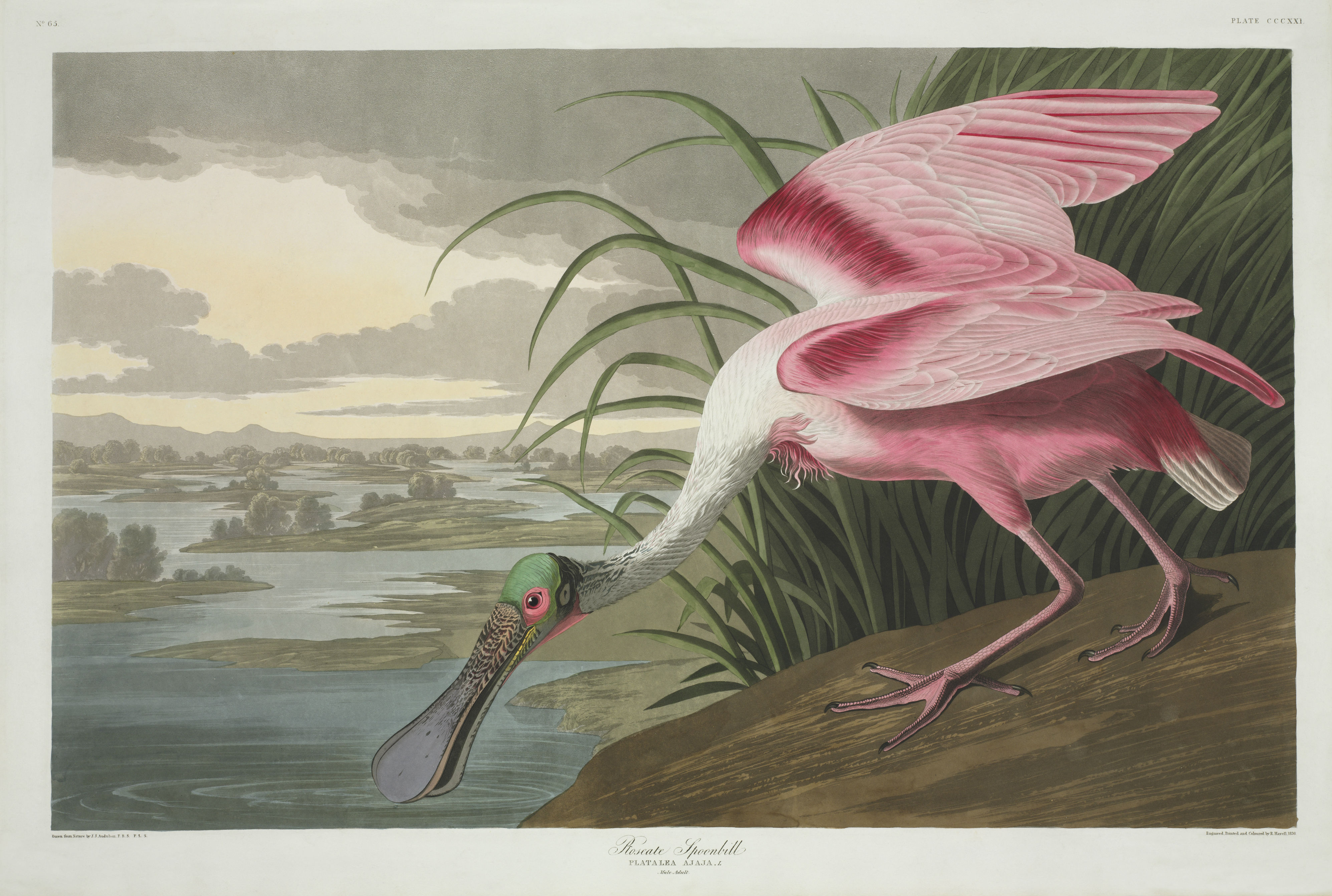
Roseate spoonbill (Ajaia ajaja)
Plate 321. Original double elephant folio (1835-38), hand-coloured aquatint. Engraved, printed and coloured by R Havell and Son, London.
The birds of American Animals
It's not hard to imagine why a group of teenagers might attempt to steal John James Audubon's book The Birds of America, a true story told in the film American Animals.
Published 1827-1838, it's considered one of the great natural history books in status, size and value.
The iconic illustrations - of which there are 435 colour plates, bound into four volumes - are double elephant folio size, which is about 90 by 67 centimetres.
Elephant by name, elephant by nature, it's also the heaviest book in the Museum's library, weighing in at a whopping 25 kilograms.
Head turning
Six of Audubon's striking prints are on display in the Museum's Birds gallery. If you've seen the film, you'll immediately recognise the pink plumage of the greater flamingo alongside one of the most admired plates from the book - seven feeding Carolina parakeets, a species which is now extinct.
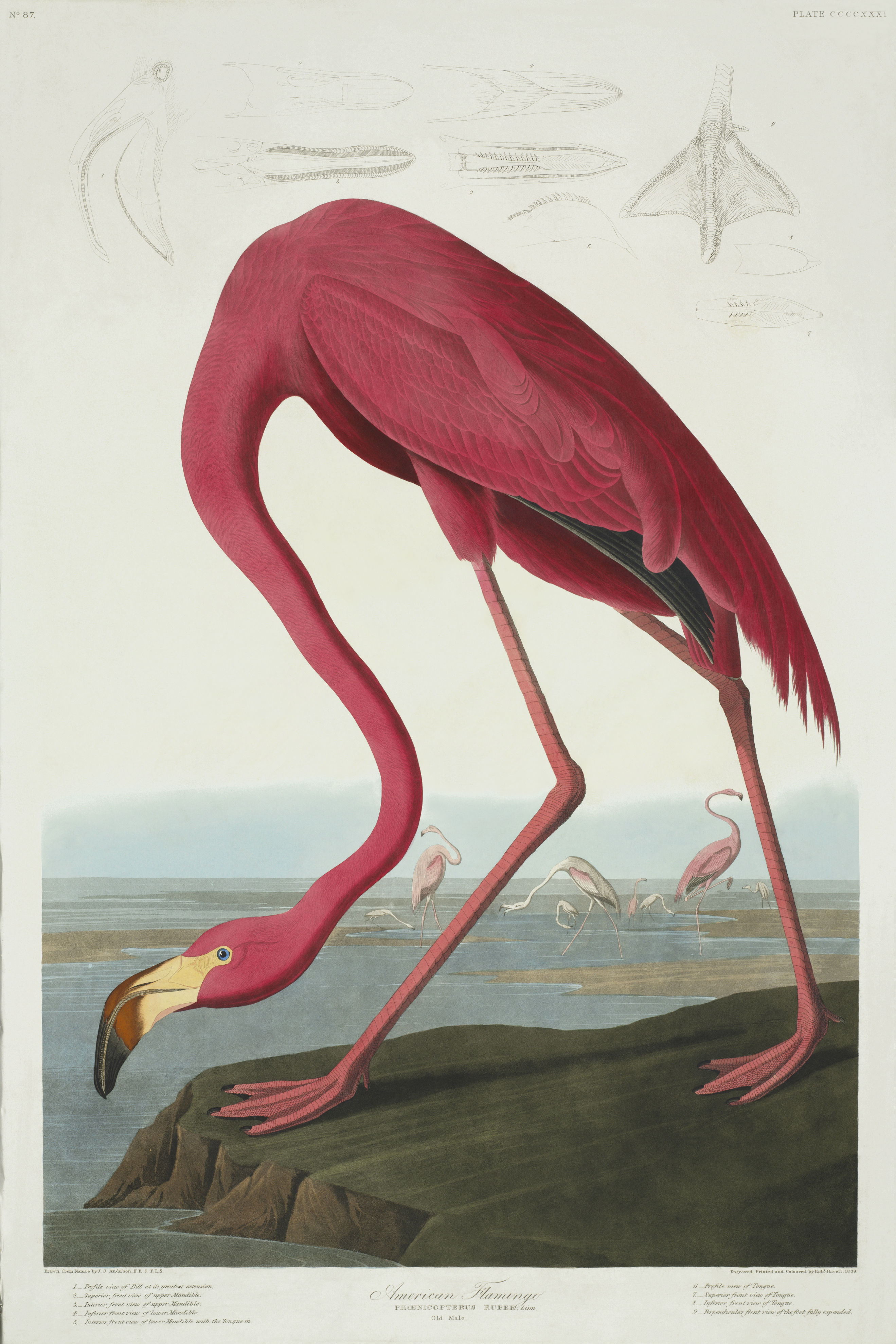
American flamingo (Phoenicopterus ruber)
Plate 341. Original double elephant folio (1835-38), hand-coloured aquatint. Engraved, printed and coloured by R Havell and Son, London.

Carolina parakeets (Conuropsis carolinensis)
Plate 26. Original double elephant folio (1827-30), hand-coloured aquatint. Engraved, printed and coloured by R Havell and Son, London.
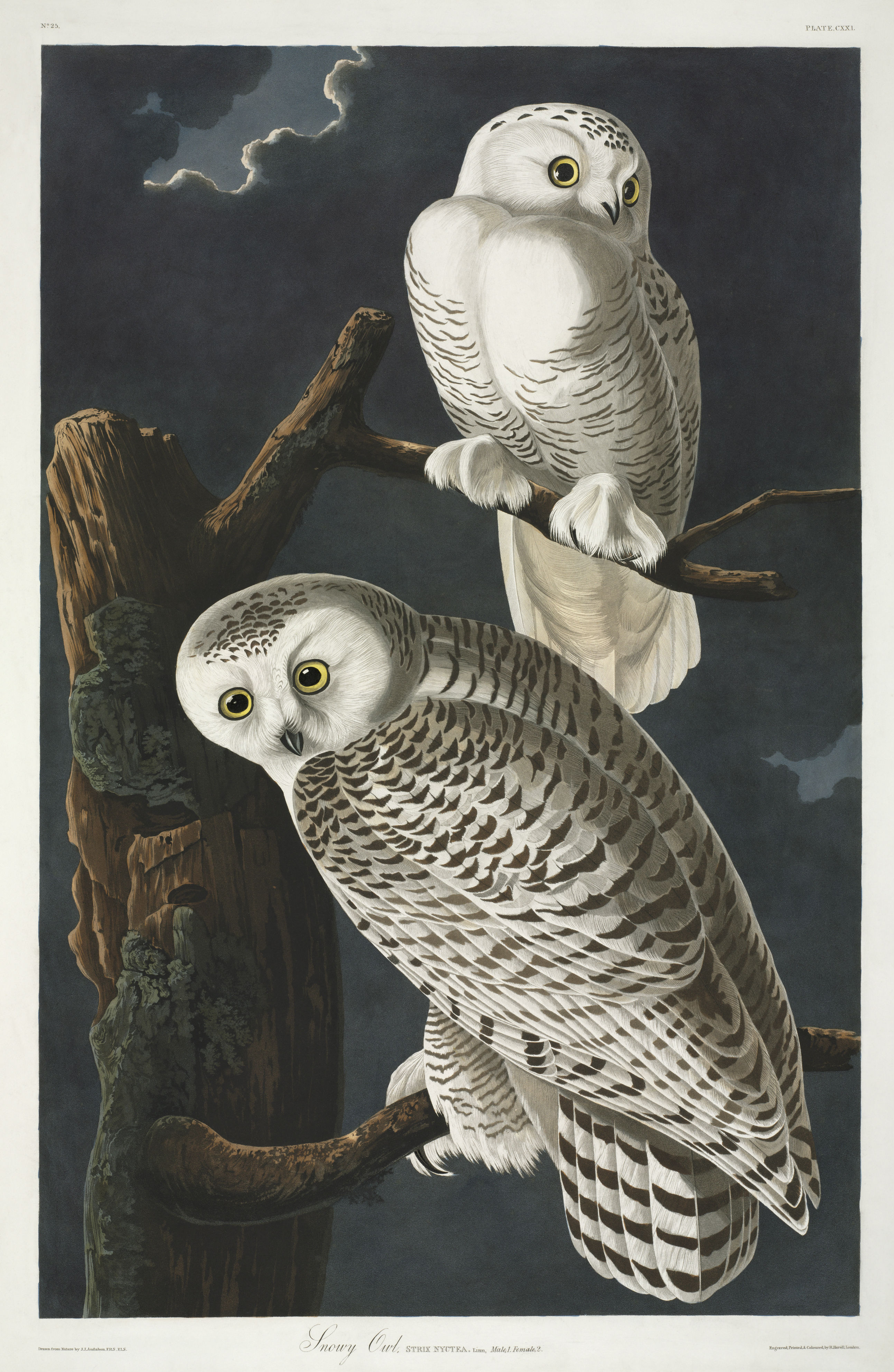
Snowy owl (Strix nyctea)
Plate 121. Original double elephant folio (1831-34), hand-coloured aquatint. Engraved, printed and coloured by R Havell and Son, London.
All of the birds are shown displaying characteristic behaviour in a natural setting - an uncommon way of illustrating birds in works of science in the early nineteenth century. The standard approach was to paint stuffed specimens mounted on a stump.
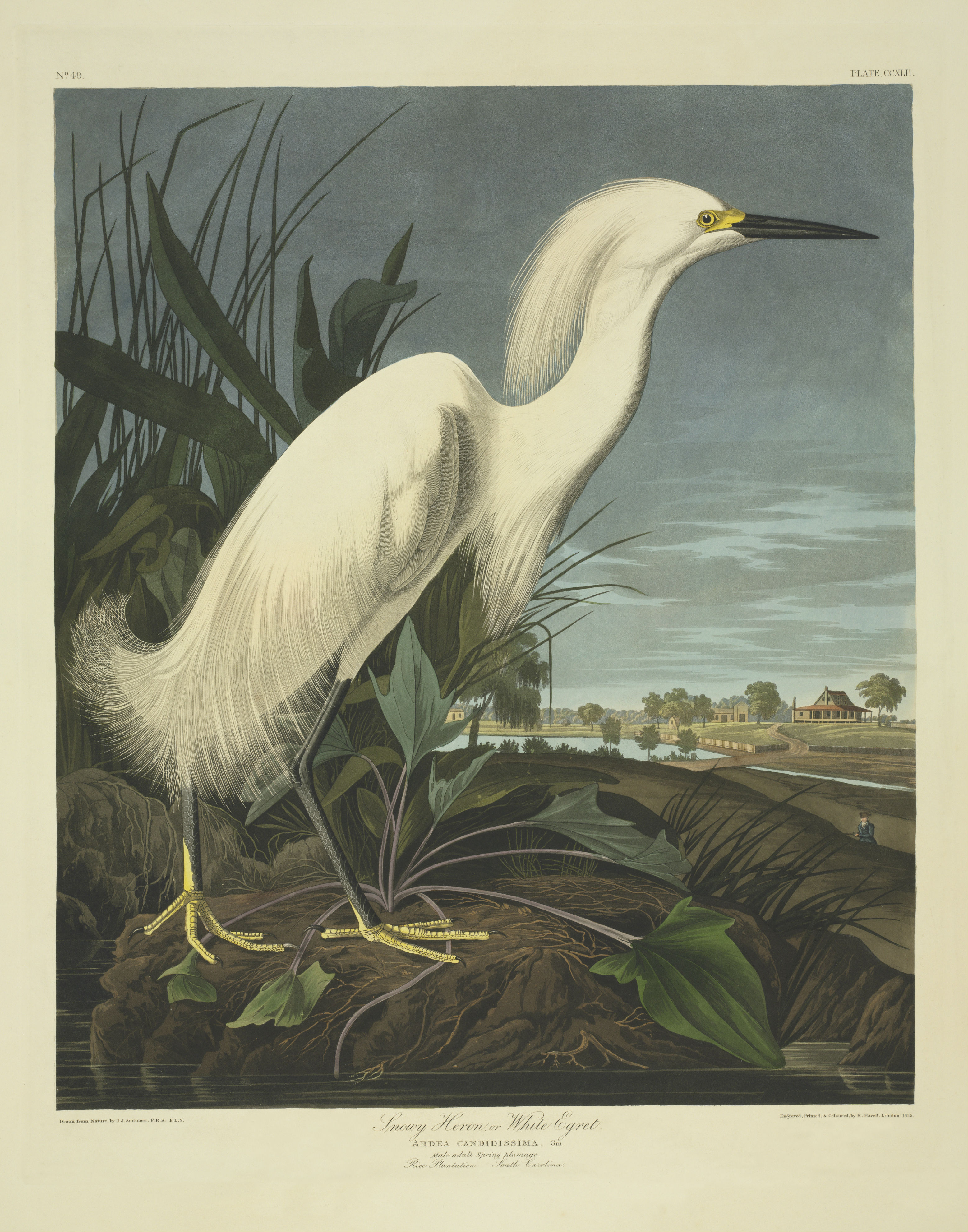
Snowy egret (Egretta thula)
Plate 242. Original double elephant folio (1834-35), hand-coloured aquatint. Engraved, printed and coloured by R Havell and Son, London.

American white pelican (Pelecanus erythrorynchos)
Plate 311. Original double elephant folio (1835-38), hand-coloured aquatint. Engraved, printed and coloured by R Havell and Son, London.
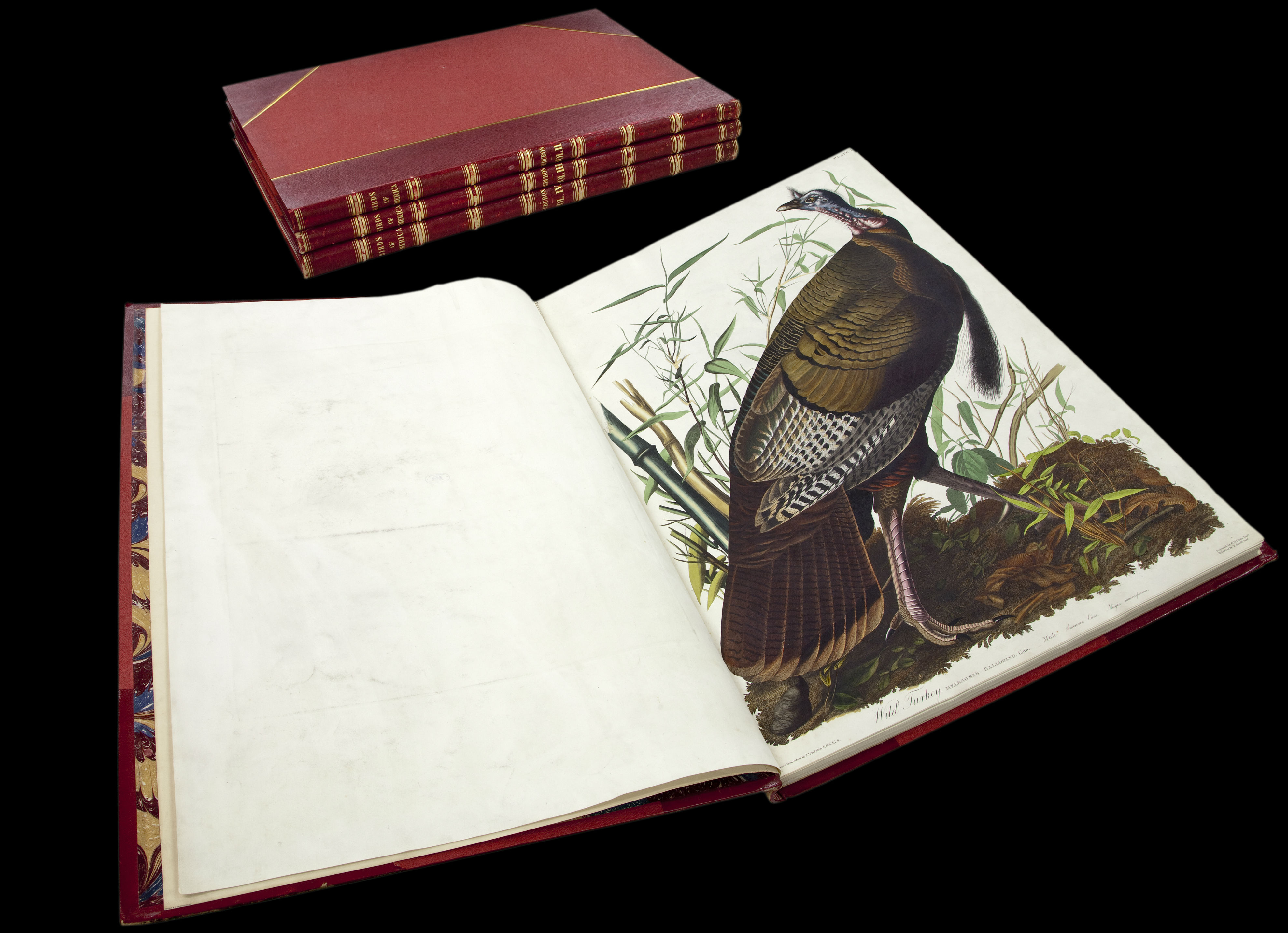
Plate one: wild turkey (Meleagris gallopavo)
The book revolutionised natural history art, portraying birds full of drama and life in their natural habitat.
You can look at (but can't touch) one of the original engraved plates from The Birds of America in the Treasures gallery above Hintze Hall.
A resized digital edition of Audubon's masterpiece has been created by disbinding one of two original sets held at the Museum and photographing it using the latest digital technology. It is available to purchase on iTunes.

